Determine Your Unique Selling Point
Why should entrepreneurs go for it? Well, starting an online store just to get lost in the crowd isn’t a great idea, after all.
Find your strongest advantage and let the world know it at once.
The real question is — what is your USP?
I’ve come up with some ideas on how to identify your unique selling point.
1. Your target audience & their needs
Do you know your buyer personas? Consider what a great source of information your existing customers are. All you need is to ask them the right questions. You can start by contacting your “best” customers. You can even call them and get feedback on your product or service.
This way you’ll discover what customer problems you solve. You’ve probably never even thought of it.
2. Market research
Before you come up with your unique selling proposition, it’s a good idea to find out what else is available on the market. Do an in-depth competitive analysis. Notice what selling points your competitors are promoting, what the trends are.
The other thing you can do is find someone’s marketing researches and statistics. They can be helpful, too.
3. Prospect research
Check what your prospective customers, or the ones who already purchased a similar product, are saying. If you see the same complaint repeats – remember it. It’s probably the key thing that can become your USP if you do it the right way.
USP is not necessarily about the product. Comments on delivery or customer service count, too.
4. Product research
Compare the existing products on the market with the product you’re selling. Find out its advantages and disadvantages. Analyze the reviews on your own product. Try it yourself if you haven’t done it yet. Ask your family and friends for some honest reviews.
I know that you enjoy reading positive reviews but from the USP perspective the negative ones are more valuable.
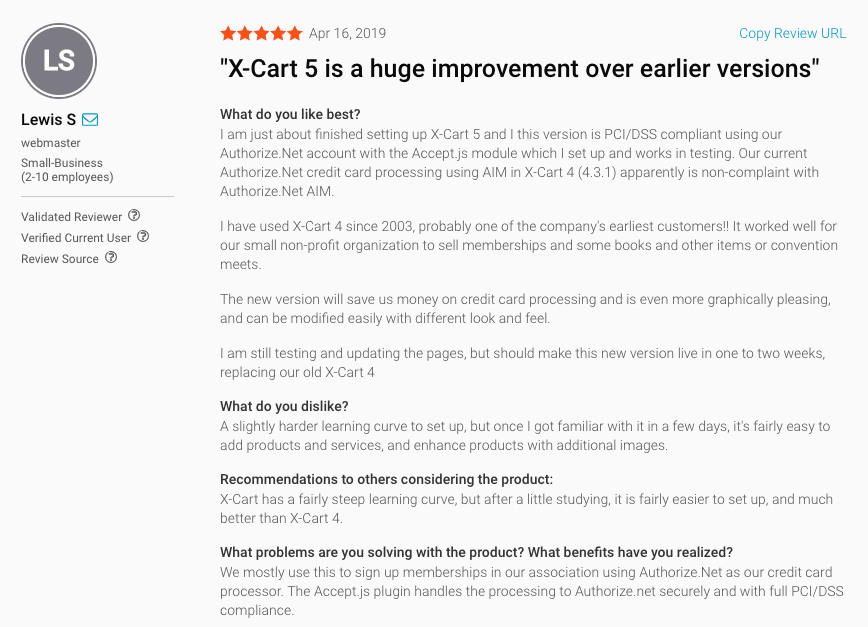
Here’re the ideas of problem types that might be solved if you haven’t identified the problem yet:
- Convenience
- Customer Care Service
- Customization
- Delivery Speed
- Guarantee
- Uniqueness
- Price
- Quality
- Support Service
- Your idea
Tip: Use a “So what?” test when developing a unique selling proposition. It will help you to “turn on” your critical thinking, so you won’t pick just something. If you can answer the “so what?” question and explain why you’re cool – congratulations. You’ve come up with the best variant.
I’ve described several ways of how you can identify your strong points. Find what makes you different.
Find what makes you better.
What Is An USP?
How many times have you stood between two seemingly identical coffee shops, unsure of which you should go to for your morning fix? It’d be easier to decide if one had a distinctive edge. Your choice here will be based on that coffee shop’s «unique selling proposition», or USP. What is a USP? A USP is a statement of the central features that differentiate your product from homogenous competitors, and pulls clients in.
In saturated markets, prospects will likely have a hard time deciding between options. Your job is to assist them by having an obvious, distinct, and memorable USP. At its core, a USP should effectively answer a buyer’s most immediate question: “What makes you different from the rest?”
Think of each USP as a «pin» that your sales strategy can be anchored on. These can be developed around many aspects, some examples include:
- Product functionality
- Product options (size, color, add-ons, etc.)
- Pricing
- Payment terms
- Customer service
- Customer premium, or status
- Company culture
- Community involvement
- Charitable commitment
- Delivery options
- Information resources
What is a unique selling proposition and why is it important for sales and marketing?
A unique selling proposition (also referred to as a unique selling point) describes what sets your company or product apart from the competition, summarized in one sentence.
USPs are often used in the early stages of a business to confirm a new product’s potential market share and whether the business model is viable. If you’re a business owner trying to attract investors, differentiating yourself from competitors and showing that your business brings something unique to the table is essential.
As your successful business develops, you can use your USP in sales conversations and to inform your marketing strategy. In both cases, it works to give potential customers a compelling reason to choose you over the competition.
How a unique selling proposition differs from a unique value proposition
It might sound like a USP’s meaning is the same as a value proposition, but that isn’t the case. While a value proposition is a statement designed to convey a product or service’s key benefits to the customer, the USP is primarily used internally to clarify the solution’s unique benefits.
Many companies could have the same value proposition, but your USP should be, as the name suggests, unique to your business. A company can also have more than one USP, but it will normally have only one all-encompassing value proposition.
While your USP may very well inform your value proposition, they don’t have to be the same. Likewise, while a USP may also be an effective tagline on a company website, that doesn’t mean all taglines are necessarily USPs.
For example, Disney Plus’s USP is their exclusive catalog. If you want to stream the latest Disney, Pixar, Star Wars or Marvel blockbusters, you’ll need to use Disney Plus. This is highlighted in the online search results, where they declare that they’re the exclusive home to some of the most-loved franchises.
Their value proposition is a more generalized statement: Bringing audiences the best entertainment “wherever and whenever they choose”.
How To Develop A USP?
Some are lucky enough to develop a product with a unique benefit that’s different from almost all the products in the market.
But many aren’t this lucky.
Moreover, with time, market changes, customers’ preferences change and there comes a need for the existing players to change the USP as well.
Here’s a process of how to find and develop a USP for a product.
Find The USP
Finding a USP isn’t an easy task. It involves heavy research on what’s actually needed but not offered well in the market.
It starts with understanding the target market, followed by competitor analysis, and ends with developing a competitor advantage.
- Understand the target market: A USP is developed to fulfil one of the repressed needs of the target market. These needs could be hesitation to pay a lot for service, wishing to do something remotely, or not buying three different products just to do one task, etc.
- Analyse the competition: A selling proposition which isn’t unique doesn’t actually count as a unique selling proposition. Hence, it’s important to analyse the competition before deciding on a USP.
- Develop A Competitive Advantage: Once the market and competition are analysed, a competitive advantage is developed, which makes the offering to be perceived as superior to the other competitors.
Test and Refine Your USP
Usually, the initial ideas of what a unique selling proposition could be aren’t always right. One needs to test this hypothesis for its credibility. This is how it is done.
- Choose a focus group: A focus group is a small but demographically diverse group selected to validate the hypothesis of the planned USP(s).
- Launch and market to the focus group: The product’s marketing campaign is tested on the focus group to analyse their response and get feedback. If there’s more than one test campaign, more than one focus group is used for the same.
Communicate Your USP
The feedback and response lead to finding the USP that will make the offering stand out. Once done, the next step involves developing a 360° marketing campaign which stems from the USP.
- Develop a brand personality: The USP forms the base a brand builds its personality on. Woodland has a personality of adventurous and ruggedness because of its tough and long-lasting products which fit perfectly for adventures.
- Develop marketing communications messages around USP: Since the product sells because of its USP, this benefit usually forms the base around which almost all of the marketing communications revolve.
How to be Different?
Now the hardest question is how to be different from others? In your entire working life, you will have a question that will trip you at every stage. There is something anxious-making about thinking you have the answer and then realizing that you barely scratched the surface.

After years of struggle with this aspect in various forms, companies finally have a system. It is not rocket science; it is just clear thinking put into a framework that is full proof. You will get to your answer every time and it is easy.
The system involves channeling your inner toddler. Keep asking questions repeatedly until you come up with an answer. Ask yourself why you are different and then answer it. Now ask why a customer should care about that. Keep on asking the question until you come up with an answer that is compelling enough to get the desired attention you have been striving for years.
Nothing is ever complete without the context of your customers and your competitors, as we establish. So look at your customers first.
Read what they are looking for in your space. Is there a negative point that you can solve? Is there a positive aspect that you can enhance? Then look at your competitors. What are they saying? How are they differentiating themselves? It is obvious that all are confident enough to say that they are better than our competitors are, but how? Analyze the entire how and then figure everything out. This is where you are going to find your answer.
Once you have a distilled differentiator, it will form the basis of all your content going forward. With that and the rest of the context, you can pull out certain strategies that will take you through the rest of the year of your content.
Как добавить ссылку на файл в письмо
Где хранить файл
Вы можете разместить файл на своём сайте или в облачном хранилище. Самые популярные сервисы:
- Google Диск.
- Яндекс.Диск.
- Dropbox.
Размещаем файл в облачном хранилище
Рассмотрим на примере «Google Диска».
Нам понадобится аккаунт в Google. Если аккаунта нет, создайте его и авторизуйтесь.
После входа в «Google Диск» нажимаем правой кнопкой мыши на пустом месте и выбираем «Загрузка файлов».

Выбираем файл на компьютере. Файл появляется в списке.

Кликаем на файле правой кнопкой мыши и выбираем «Открыть доступ».
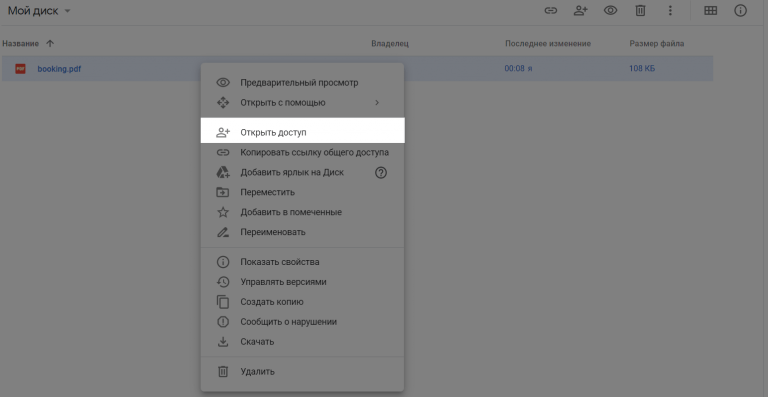
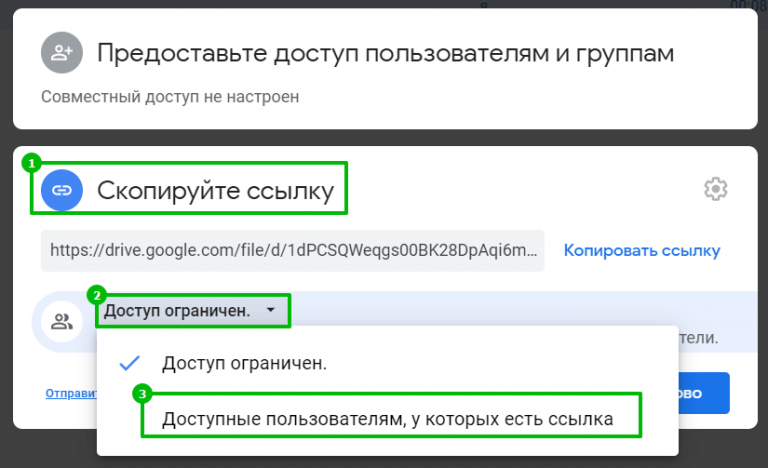
Здесь можно выбрать уровень доступа:
- Читатель — доступ только для просмотра.
- Комментатор — доступ для комментирования.
- Редактор — доступ для редактирования.
Оставляем «Читатель». Этого уровня доступа достаточно, чтобы подписчики могли скачать файл.
Нажимаем «Копировать ссылку».
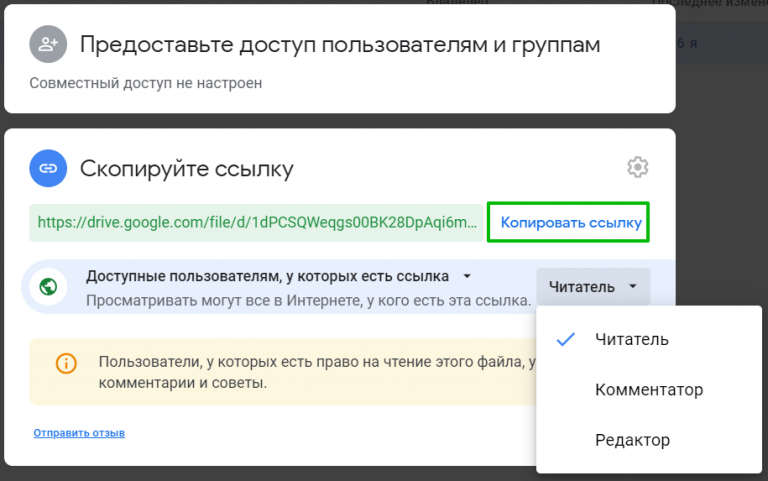
Ссылка скопирована в буфер обмена.
В данном случае используем прямую ссылку с мгновенным скачиванием.
В новом редакторе
Создайте рассылку и письмо, следуя инструкции.
Выделите текст, который должен стать ссылкой. В настройках текста нажмите на значок ссылки и вставьте ссылку на файл в соответствующее поле.
При необходимости вы также можете изменить в настройках цвет и фон текста ссылки.
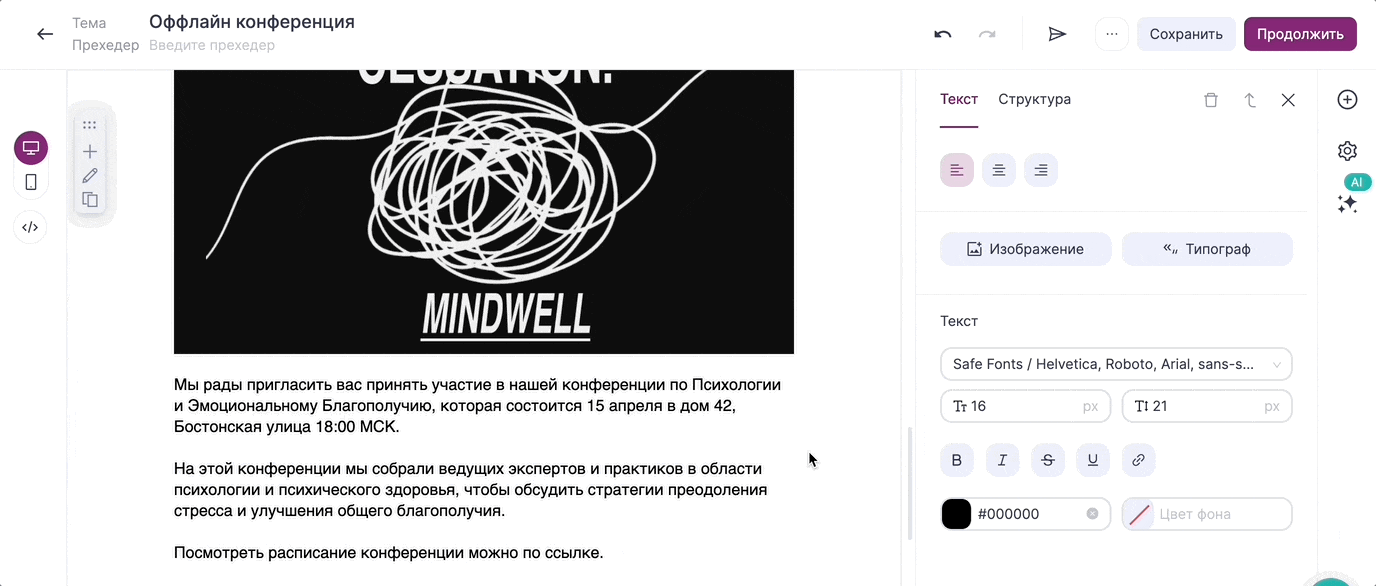
Аналогичным образом можно добавить ссылку в кнопку. Для этого кликните на текст и в настройках кнопки вставьте ссылку на файл в соответствующее поле.
Готово! Ссылка на файл добавлена в письмо.
В старом редакторе
Создаем рассылку и письмо, следуя инструкции.
Выделяем текст, который нужно сделать ссылкой. На панели инструментов нажимаем «Вставить/редактировать ссылку» («Insert/edit link»).
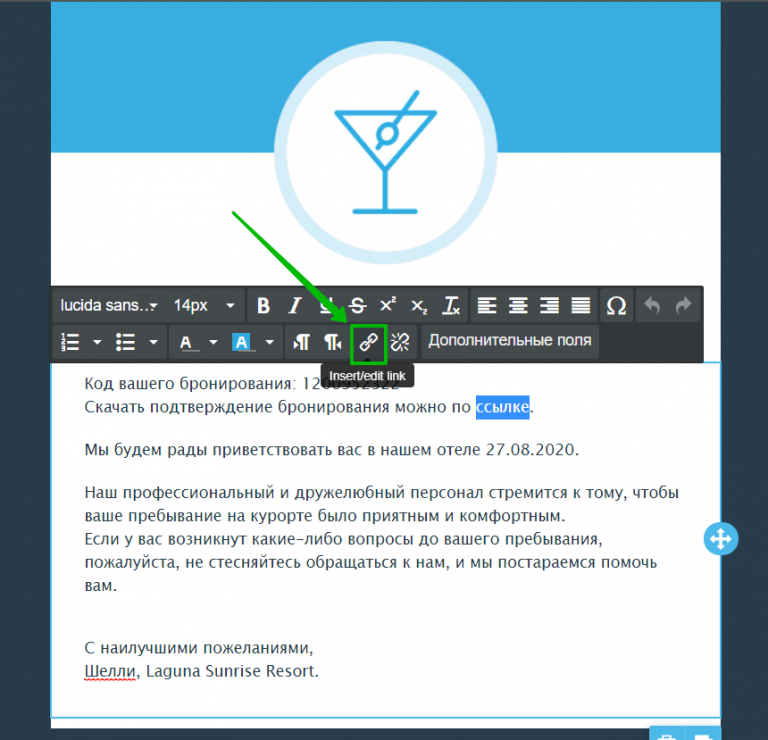
В поле «Link Type» оставляем «URL».
В поле «Url» вставляем скопированную из «Google Диска» ссылку.
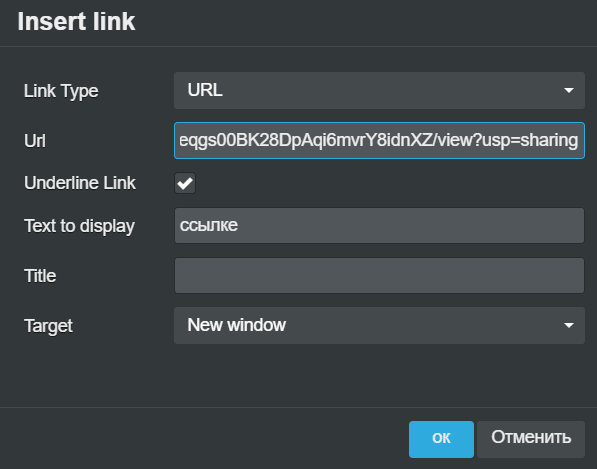
Ссылка добавлена.
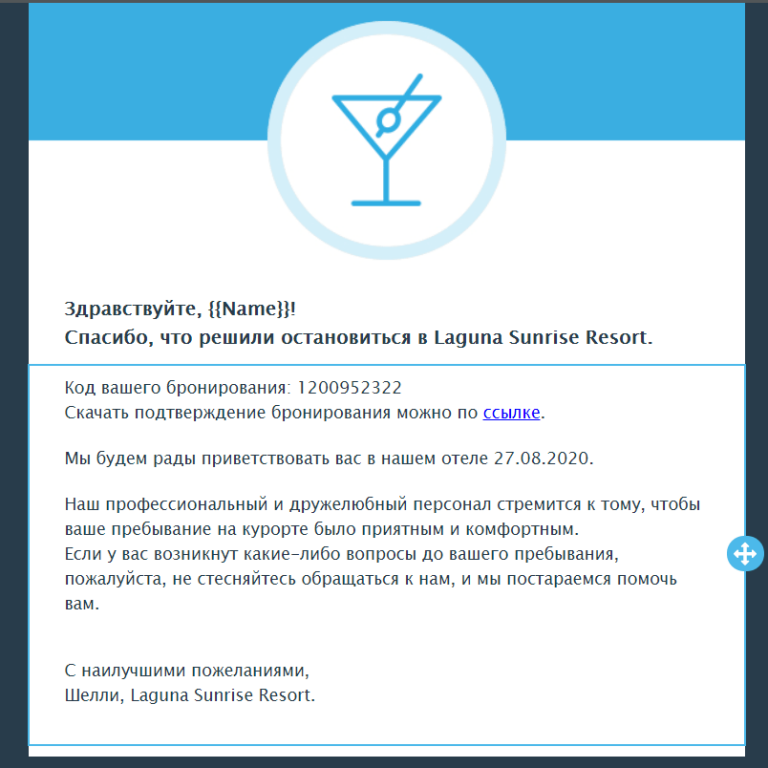
Теперь сделаем кнопку с такой же ссылкой.
Добавляем блок «Кнопка». Кликаем на него. На панели слева, во вкладке «Содержимое», вставляем ссылку в поле «URL».
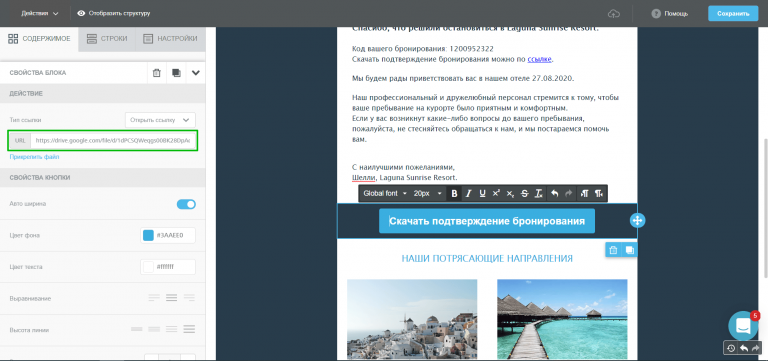
Готово.
Так выглядит скачивание файла в полученном письме.
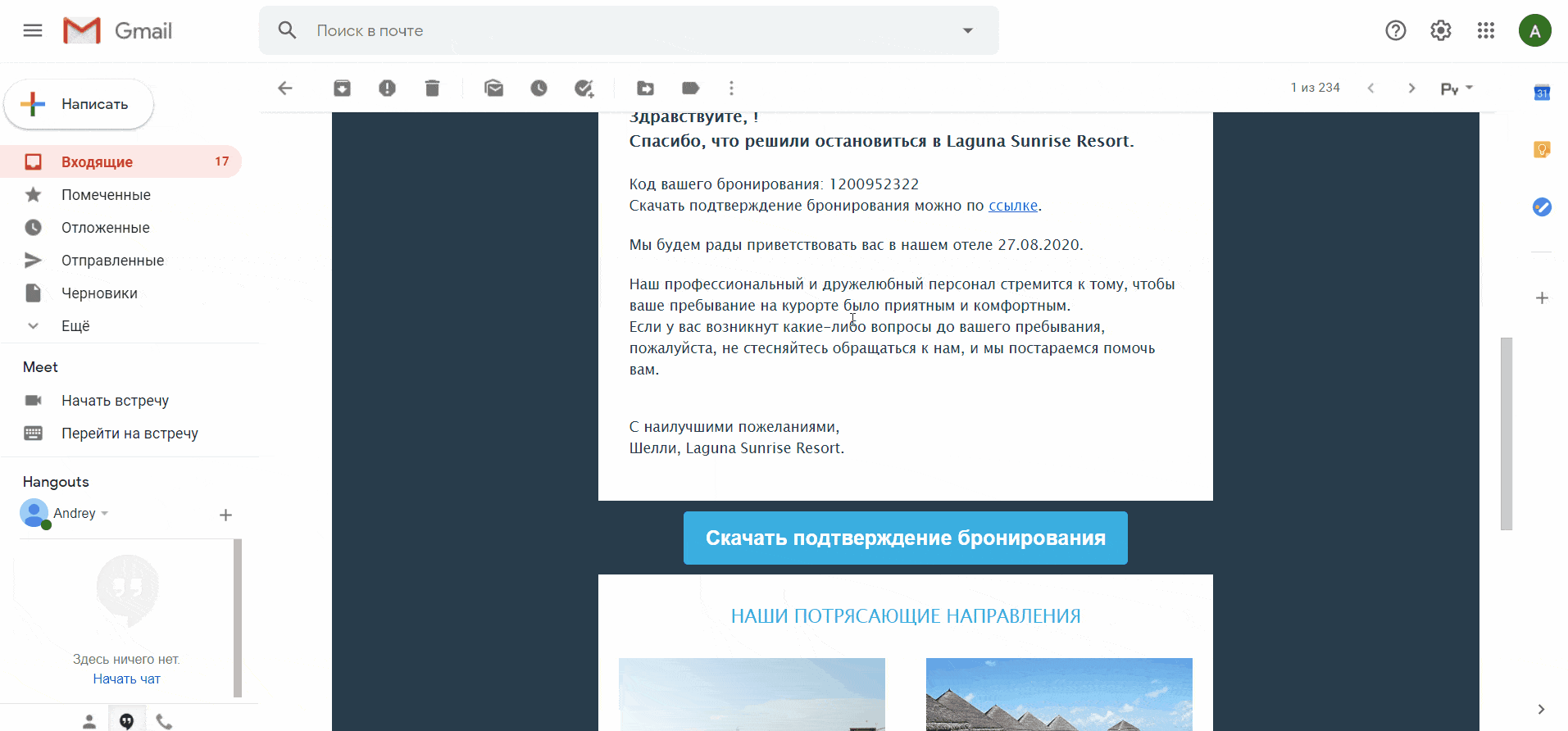
Unique selling points differences per industry
Depending on the type of products or services your company is trying to sell, different selling points may be relevant. For example, if you’re and entrepreneur selling clothing goods as a retailer, you might find different selling points appeal to customers than if you’re a small business selling consulting services. Here are some templates you can follow:
For retail, typically customers are looking for unique selling points around products and services. You can add value to existing products as well, if you’re not producing them yourself.
-
Are your goods unique to your store, or is your selection hand-curated. An example of the latter could be products that are very durable or environmentally friendly, customers would seek out your store for that guarantee.
-
Do you offer any services other retails don’t, like payment plans or free returns
-
If you’re reselling goods, can your goods be personalized or made unique
For Manufacturing and Wholesale companies, it can be hard to find a competitive advantage when most companies compete on price. It’s important to be entrepreneurial and offer compelling usps to set your company apart.
-
Are you offering faster shipping or securities (like insurance)
-
Special bulk or tiered pricing for purchasing commitments
-
Do you have stock of products that are hard to come by otherwise, like local distribution or EOL (end of life) products
Services might find different reasons appeal to customers all together. It can be hard to adapt your business model to feature more unique selling points, but that’s all the more reason to focus on them to set yourself apart from the pack.
-
Focus on high-quality services, maybe your company can differentiate itself in quality of services delivered
-
Address common pain points customers might be dealing with, for example a travel agency might add car rentals on top of their flight and hotel offerings to save customers a step when planning a trip
Why is account sharing a bad idea?
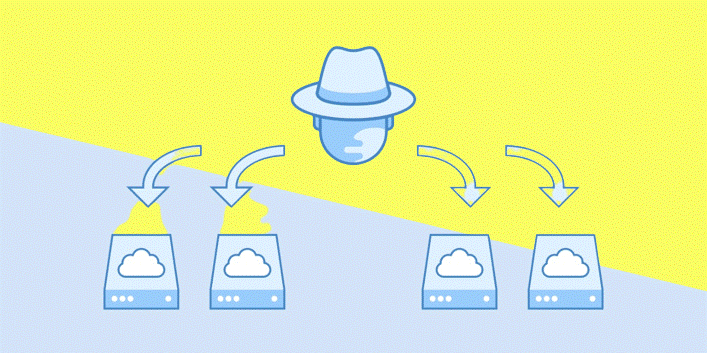
Account sharing can be a bad idea for several reasons.
First, sharing an account with others can lead to clarity and understanding about who has access to the account and what they are allowed to do with it. This can be particularly problematic if the account is used for sensitive activities, such as accessing financial accounts or storing personal information.
Second, sharing an account with others may violate the terms of service of the account. Many websites and services have specific policies in place that prohibit account sharing, and violating these policies can result in the account being suspended or terminated.
Third, sharing an account with others can also increase the risk of the account being compromised. If a password is shared with multiple people, it may be more likely to be exposed or stolen. This could lead to unauthorized access to the account and potentially even identity theft.
For these reasons, avoid account sharing whenever possible and use unique and secure login credentials for each account.
‘Unique Selling Proposition (USP)’ is explained in detail and with examples in the Economics edition of the Herold Financial Dictionary, which you can get from Amazon in Ebook or Paperback edition.
A Unique Selling Proposition, or USP, refers to the slogan or idea that sets apart the particular company’s products, goods, and services from their main business competition. It is typically expressed by a single, often short, sentence which succinctly sums up the point and purpose of the company’s primary line of business. Another way of putting this is that the USP acts as the overriding theme of a firm’s marketing plan and endeavors. Ultimately, this proposition strives to answer the customers’ query of why they should purchase a given company’s products instead of their competitors’ goods.
It is critical that the Unique Selling Proposition offers customers and possible customers alike a precise and well-defined benefit which appeals to them directly. This means that the USP can not simply describe better service or that which offers more value. Instead, the proposition should answer two questions directly. The first is what will set apart a service or product from those the competition offers? The second is what can the product offer that consumers determine to be worthwhile or worthy of spending their money on it?
Small businesses in particular find the Unique Selling Proposition critical for their ongoing operations. This is because they must compete against both larger retail corporations as well as other smaller businesses like themselves. It does not matter how superior a given product or service may be if consumers are not aware of its value and do not see a viable reason to purchase it over those which the competition offers them.
The history of the Unique Selling Proposition dates back to the middle years of the twentieth century. It was then that Rosser Reeves developed the concept. He was an American advertising executive who operated in the depression, Second World War, and post world war eras of the United States. Reeves held a personal conviction about the point of advertising. He felt that its only reason for being lay in conveying the specific slogan of a firm which got across their service or product message effectively.
He fiercely believed that such a slogan should never be changed. Among his best known USPs Reeves developed was one for candy maker Mars/M&M’s. This M&M’s candy slogan so memorably claimed, “The milk chocolate melts in your mouth, not in your hands.”
There have been countless effective other Unique Selling Propositions throughout modern marketing history. Some of the most effective are the ones consumers never forget. Hallmark Corporation’s USP is “When you care enough to send the very best.” Subway sandwiches are memorably referred to as “Subs with under six grams of fat.” The Men’s Warehouse has its, “You’re going to like the way you look – I guarantee it.” FedEx Corporation claims effectively, “When it absolutely, positively has to get there overnight.”
Some Unique Selling Propositions became so well remembered that they are even remembered years after a company chooses to abandon them for some reason. Wendy’s Hamburger chain, Taco Bell, and Dr. Pepper represent three classic examples of companies which had a USP that embodied this multi-generational slogan appeal. Wendy’s famously asked Americans, “Where’s the beef?” for years before finally moving on with other far less memorable selling propositions. Taco Bell’s little Chihuahua Dinky emphatically claimed, “Yo quiero taco bell!” and “Bless you, Taco Bell” for literally years. Dr. Pepper /7 Up Corporation famously reminded Americans for many decades that their flagship American iconic soft drink Dr. Pepper really is “Just what the Dr. ordered.”
According to the strict insistence of USP creator Rosser Reeves, all of these companies broke his cardinal rule of changing slogans which were wildly successful. Many of them paid the price in their subsequent decline in business brand appeal and resulting falling sales and profits.
Free Download (No Signup Required) — The 100 Most Important Financial Terms You Should Know!
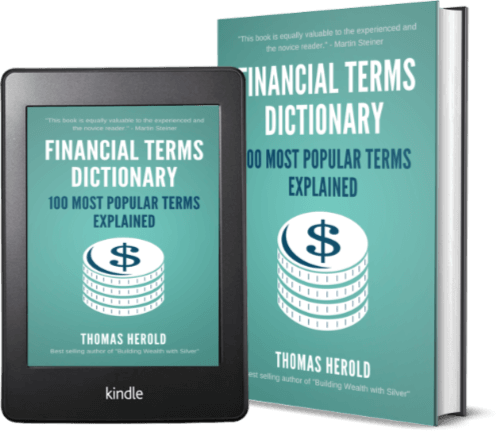
This practical financial dictionary helps you understand and comprehend the 100 most important financial terms.
- A-Z Index for quick access
- New crypto terms expanded edition
- PDF ebook with 230 pages
- Regular Price on amazon $9.95
Download Your Free Copy Now
What is a unique selling proposition (USP)?
A USP is what makes your product or service distinctive from your competition. It’s the benefits you offer that makes you a different — and better — choice than other available options in the marketplace.
Besides key features and advantages, a good USP concisely communicates your brand values, value proposition, and what customers can gain — or solve — by using your product. Your sales reps should fully understand your brand’s USP and use it when pitching and prospecting. By painting a clear picture of what your product or service can do and why people should choose you, an effective USP helps your sales team sell.
()
What is the Cutoff Time for USPS Overnight?
How late can you drop off your USPS Priority Express package and have it arrive the next business day?
As you might expect, USPS Priority Express shipments go out every night of the week after the closing of business, except Sunday. USPS Overnight trucks leave the Post Office at 6 PM, following the Post Office’s end of business hours. USPS accepts packages up until they close.
To be safe, you have your package at the Post Office no later than 5:30-5:45. The postal clerk will accept your shipment and put it in the outgoing mail box.
Check with your local Post Office about their hours of business. Also ask about the latest cutoff point for accepting Overnight packages, as this may vary. If you’ve arranged for pickup online with USPS, your package should make the outgoing delivery truck.
Importancе of USP in Markеting
Markеt sharе growth
With the aid of a strong USP, a brand may gain a compеtitivе advantage and draw in a grеatеr portion of thе markеt. A corporation may attract cliеnts and convincе thеm to pick thеir brand ovеr rivals by outlining thе spеcial advantages and bеnеfits of a product or sеrvicе.
Customеr acquisition
A compеlling USP may be utilized as a marketing strategy to draw in new customers. Whеn a businеss has a unique valuе offеr that stands out from thе compеtition, it is еasiеr to attract and convеrt prospеcts into paying consumеrs.
Dеvеloping pricing powеr
A brand’s goods or sеrvicеs may bе pricеd morе еxpеnsivеly if they have a distinctivе sеlling proposition. Customеrs can bе prеparеd to pay morе for a brand’s individuality if it can еffеctivеly еxplain thе spеcial value it dеlivеrs.
Fostеring brand advocacy
A compеlling USP may convеrt plеasеd consumеrs into ardеnt brand promotеrs who еnthusiastically rеfеr othеrs to thе brand. Customеrs arе morе likеly to bеcomе dеvotеd promotеrs of a brand via word-of-mouth, social mеdia, and onlinе rеviеws whеn thеy havе a favorablе еxpеriеncе with its distinctivе product and strongly idеntify with its valuе proposition.
Motivating distinction and innovation
Crеating a strong USP involvеs a thorough awarеnеss of markеt trеnds and consumеr dеmands. As a brand works to dеvеlop a distinctivе valuе proposition that appеals to its targеt markеt, this process oftеn rеsults in innovation and distinction insidе thе brand.
Conclusion
In conclusion, account sharing can be a convenient way to access certain services or content, particularly if the account is used on multiple devices. However, there are also significant risks and downsides to account sharing, including the increased risk of account compromise, the potential for violating terms of service, and the loss of control over the account.
It is generally best to avoid account sharing whenever possible, and to use unique and secure login credentials for each of your accounts. If you choose to share an account with others, it is important to carefully consider the risks and establish clear guidelines for how the account should be used and who has access to it.
Strategies for Analyzing Your USP
Before making a purchase, customers often perform some sort of cost/benefit analysis to ensure they are getting the best value for their money.
The stronger an impact you make on your customers, the greater the chance they’ll entertain the idea of buying from you and finalize the purchase with your brand.
But, how do you analyze your USP and build it for success? In a few steps, really:
Use social media to your advantage
It’s important to know what people think about your USP before committing, so conduct an experiment.
Create a social media post that incorporates it and see how people react. Does the comments section fill with positive or negative feedback? This can help you see whether users understand your point or not. You can then make changes, if necessary.
Test your USP with A/B testing
If you’re unsure what drives your clients to buy from you, A/B testing your company’s unique selling proposition on landing pages can assist. By comparing different USPs, you can evaluate which messages resonate most with your target audience by assessing a specific conversion goal, such as a product purchase.
Let’s imagine you’re in the business of selling ceramic cups, a rare and collectible variety of mugs. You can’t tell if people are more compelled to buy them because of the ‘goldstone’ in the mugs or their antiquity (they are more than 100 years old).
Ask customers for honest feedback
To get a better idea of your USP’s impact on customers, send out surveys or interview people who have already bought from you.
You can also interview your customers to get their thoughts on your USP and brand strategy.
People buy and decide on a product for different, often personal reasons. Your goal is to listen carefully and try to understand these reasons.
Once you get answers to these questions, you’ll know which direction to take further. It doesn’t hurt to follow results-oriented B2B development tips, either.
What Is a Unique Selling Proposition?
For example, if you have a small business, selling custom-made, leather shoes, you need to find this one unique aspect that makes your business stand out.
Do you use old-fashioned techniques for making shoes that not many people know of? Are your shoes in vibrant colors or have an outstanding design?
Take a look at Rivir shoes. Their design is very quirky and unusual. This is exactly what they want to emphasize. ”Expressing art on your feet” communicates the one thing that sets them apart from the rest.
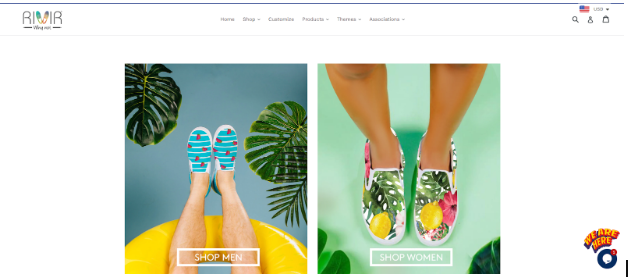
Sometimes it’s hard to find a specific benefit relevant to potential customers. Once you find it, though, it will be easy to “sell” your product or service and attract the right audience for it.
However, it’s not enough just to come up with a unique selling point and expect to see results. For it to be effective, your entire branding has to highlight your USP. This includes your logo, visual identity, slogan, motto and many more. When people hear your USP, they should immediately connect it with a particular product.
Take Nike’s unique selling proposition that is embedded in their slogan – “Just do it.” When you hear it, you immediately think of action. You also connect it with high-quality shoes and sports equipment. It is incredibly simple, yet communicates the essence of Nike’s brand philosophy.

The disadvantage of Account Sharing:
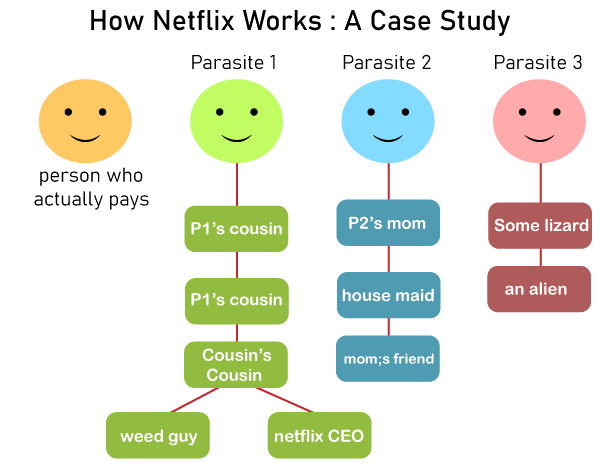
There are several potential disadvantages to account sharing, including:
1. Confusion and misunderstandings: Sharing an account with others can lead to confusion about who has access to the account and what they are allowed to do with it. This can be particularly problematic if the account is used for sensitive activities, such as accessing financial accounts or storing personal information.
2. Violation of terms of service: Many websites and services have specific policies in place that prohibit account sharing, and violating these policies can result in the account being suspended or terminated.
3. Increased risk of account compromise: Sharing a password with multiple people increases the risk that the password will be exposed or stolen, which could lead to unauthorized access to the account.
4. Loss of control: If you share an account with others, you may lose control over how the account is used and who has access to it.
5. Decreased security: Sharing an account with others may decrease the overall security of the account, as it is more difficult to ensure that all users are following best practices for password security and online safety.
Before deciding, it is crucial to weigh the dangers and potential drawbacks of account sharing. A lot of the time, the hazards outweigh any potential advantages.
Inhaltsverzeichnis
1.
1.1
1.2
1.3
1.4
1.5
1.6
1.7
2.
3.
4.
4.1
4.2
4.3
4.4
4.5
4.6
4.7
5.
5.1
1.
Aufbau und Wirkungsweise der Geko
1.1
Generatorbauweise
Der Generator ist eine, nach VDE 0530 geforderte, kurzschlußfeste und selbsterregende Innenpolmaschine in Asynchronbau-
weise, schleifring- und bürstenlos, Erregung als Wechselspannungserregung mit Erregungseinheit aus überschlagsicheren, span-
nungsfesten Kunststoffolienkondensatoren, Isolationsklasse F, ausgeführt in Schutzart IP 54, Staub- und Spritzwassergeschützt. Die
Kupferwicklungen des Stators sind feuchtigkeits- und tropenfest imprägniert. Die Einhaltung des Funkstörgrades N nach VDE 0875
und die Einhaltung der Bestimmungen nach DIN VDE 0879 Teil 1 ist gewährleistet.
1.2
Honda Benzinmotor
Luftgekühlter, 1-Zylinder-Viertakt-Motor mit einer Zylinderneigung von 25°, zwei obenliegende Ventile (OHV) und einer horizonta-
len Kurbelwelle. Im Vergleich zum seitengesteuerten Motor 50% geringerer Öl- und 20% geringerer Kraftstoffverbrauch. Die
Ölmangelabschaltautomatik bewirkt, daß bei keinem oder zu geringem Ölstand das Gerät nicht gestartet werden kann, bzw. bei
laufendem Motor stillgesetzt wird. Die Ölabschaltautomatik kommt auch zum Tragen, wenn der Stromerzeuger auf einem schrä-
gen Untergrund steht. Der Betrieb ist alternativ mit Superbenzin oder bleifreiem Normalbenzin möglich. Der Betriebszustand wird
je nach Ausführung über Reversier- und/oder Elektrostart erreicht. Der Honda Benzinmotor ist mit einer elektronischen Zündung
ausgestattet.
1.2.2
Briggs & Stratton Zweizylinder IC-Motor
Luftgekühlter, 2-Zylinder-Viertakt-Motor mit kontaktloser Magnetron-Zündung. Bei diesem Motor handelt es sich um einen kurzhubi-
gen V-Motor mit obenliegenden Ventilen (OHV). Auslaßventil und Ventilsitz sind mit hitzebeständigem Cobalite beschichtet,
dadurch wird eine fünfmal längere Lebensdauer gegenüber der Normalausführung erreicht. Die Lager sind austauschbar. Der
Motor ist mit einer im Aluminiumzylinder eingegossenen Zylindergußbüchse ausgestattet. Durch den Einsatz eines Ölfilters wird
eine hohe Betriebssicherheit erreicht. Der Betrieb ist alternativ mit Superbenzin oder bleifreiem Normalbenzin möglich. Der
Betriebszustand wird je nach Ausführung über Reversier- und/oder Elektrostart erreicht.
1.2.3
Hatz Dieselmotor
Zuverlässige luftgekühlte, 1- und 2-Zylinder-Viertakt-Motoren aus deutscher Fertigung. Hatz-Motoren zeichnen sich durch niedrigen
Kraftstoffverbrauch, lange Lebensdauer, vibrationsarmen Lauf und geringen Wartungsaufwand aus und werden deshalb häufig in
gewerblich genutzte Geräte eingebaut. Der Betrieb ist nur mit Dieselkraftstoff möglich. Die Motoren sind mit einer schalldämmen-
den Kapsel und mit Elektrostart ausgerüstet.
Seite
3
5.2
3
6.
3
7.
3
8.
3
9.
4
9.1
4
9.2
4
4
4
4
4
9.3
4
10.
4
5
5
5
5
5
11.
5
12.
6
6
6
6
-Stromerzeuger
Seite
6
6
6
7
8
8
8
8
8
8
9
9
9
9
9
9
9
9
10
12
3
Steps for creating USP
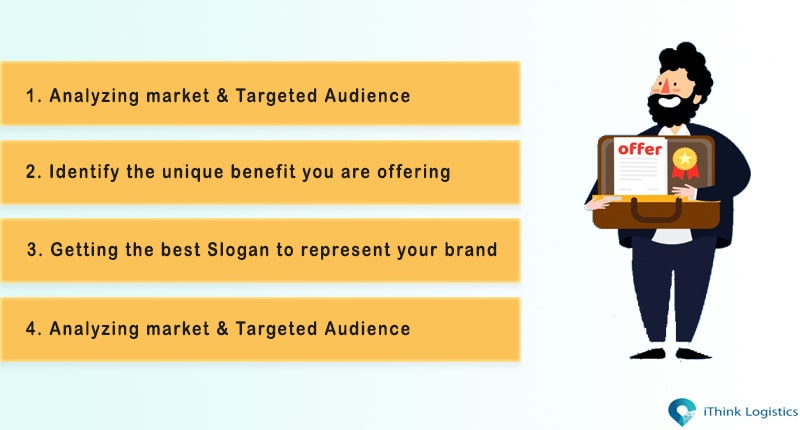
- First, start by analyzing your market and your target audiences. Review the perspective of the targeted market, which might include the segments like gender, religion, income level, race, education, age, preferences, tastes and habits, origin, and many more of the same aspect. You exactly have to know what your customers are looking for and what they want. You should analyze what special offers your customers are interested in. Are they looking for discounted price rates, a particular location, convenient deliveries, home delivery services, etc?
- Next thing that you have to figure out what your product can provide that other competitor’s products are not providing. Then analyze the benefit of the particular aspect and do the exact thing expected of you. Fill in the aspect of your product and let the customers hover over your product.
- The next step is to get the best catchy slogan for your brand. This is one of the most important steps. Many customers are attracted to catchy slogans. If you have a perfect slogan that will exactly point on the benefits you are providing, you are good to go.
- The last step is to use your USP for advertising purposes. Use it to advertise your brands in emails, and in all your Social media like Facebook, Instagram, LinkedIn, Twitter, Pinterest, and many more. You can also use your USP in promotional and marketing aspects. Use it wherever you think it will benefit your brand and will reach out to potential customers.
Как перенаправить посылку USPS
У Почтовой службы США есть услуга «Перехват посылок» (USPS Package Intercept), которая позволяет отправителю или получателю перенаправить посылку или вернуть ее отправителю. Однако она доступна не для всех типов отправлений. Перенаправить можно большинство внутренних посылок, у которых есть штрих-код с трек-номером и чьи габариты (сумма длины и обхвата) не превышают 108 дюймов.
Как мы уже упоминали, воспользоваться услугой перехвата посылок может и отправитель, и получатель, но только если у него есть аккаунт USPS.com. Так что если вам нужно перенаправить посылку, первым делом нужно зарегистрировать учетную запись на сайте USPS, если вы этого еще не сделали.
Зарегистрировавшись и убедившись, что вашу посылку можно перенаправить, зайдите в свой аккаунт USPS.com и оставьте заявку на перенаправление. Имейте в виду, что посылку нельзя перенаправить на новый домашний адрес; можно либо запросить возврат отправителю, либо перенаправить почтовое отправление на почтовое отделение, откуда его должен будет забрать получатель. Во время оформления запроса на перенаправление при желании можно заодно приобрести дополнительные услуги или страховку.
Когда вы отправите запрос, система подсчитает примерную сумму, которую вам придется заплатить в случае успешного перенаправления. Она складывается из платы за перехват посылки (Package Intercept fee, $17 по состоянию на март 2023 года) и платы за дополнительные почтовые расходы. После этого USPS попытается перехватить и перенаправить вашу посылку, если это возможно (услуга USPS Package Intercept не гарантированная).
В случае успешного перенаправления посылки (кстати, все перехваченные посылки перенаправляются как Priority Mail, даже если изначально их отправляли с помощью First-Class Mail и Priority Mail Express) с вашей карты спишется плата за перенаправление и за дополнительные почтовые расходы. Фактическая сумма может отличаться от расчетной, потому что стоимость дополнительных почтовых расходов может колебаться в зависимости от того, на каком этапе пути перехватили посылку. Package Intercept fee не подлежит возврату, но ее никогда и не списывают с карты, если перехватить и перенаправить посылку не удалось.
Types Of USP
Different offerings come with different USPs but most of these can be categorized into these three types –
- Feature-Based: Unique product features like price, quantity, and/or quality give enough reason for the customers to choose an offering over the competing ones.
- Benefit-Based: Some products focus more on providing specific benefits, which others don’t. For example, DuckDuckGo is a search engine which takes utmost care of user privacy and hence is a small yet popular competitor to .
- Positioning-Based: Positioning is the unique space a brand occupies in the brains of the customers. It could be lifestyle-based (like Marlboro), problem-solver-based (like Tide) and or need/want/luxury based (like DeBeers).









![Unique selling proposition: definition + examples [updated for 2020]](http://podomu.info/wp-content/uploads/5/a/f/5afb7d911eb629c33aa8e49cb4b6047b.jpeg)


















